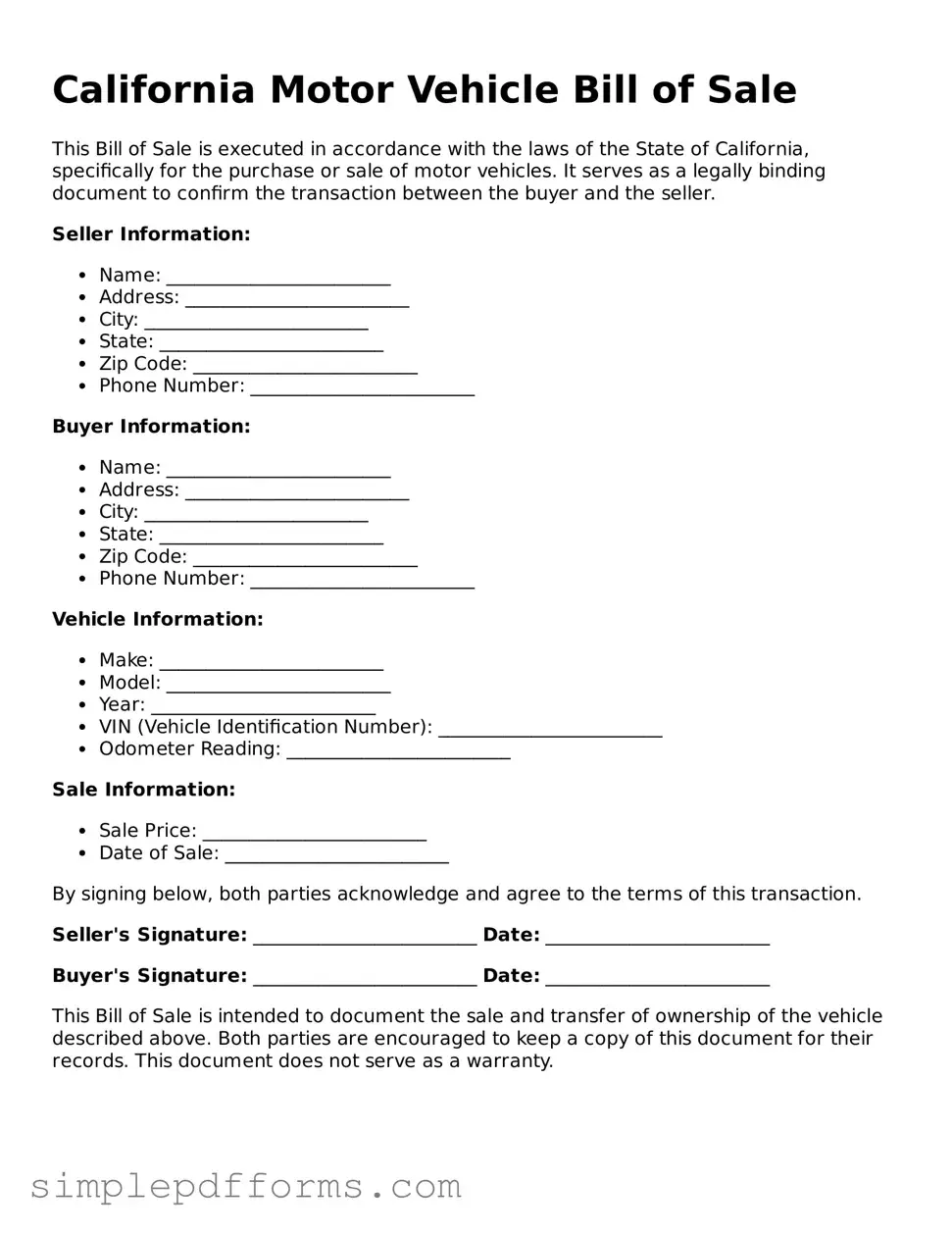When filling out the California Motor Vehicle Bill of Sale form, individuals often overlook critical details that can lead to complications later on. One common mistake is failing to provide accurate vehicle information. This includes the Vehicle Identification Number (VIN), make, model, and year. Inaccuracies in these details can cause confusion during the title transfer process.
Another frequent error is neglecting to include the sale price. The form requires a clear statement of the amount paid for the vehicle. Omitting this information can lead to issues with tax assessments and may raise questions during a DMV review.
Many people also forget to sign the document. Both the seller and buyer must provide their signatures to validate the transaction. Without these signatures, the Bill of Sale is incomplete and may not be recognized by the Department of Motor Vehicles (DMV).
In addition, some individuals mistakenly assume that a Bill of Sale is only necessary for used vehicles. This is not the case. Even for new vehicles, a Bill of Sale is essential for establishing ownership and facilitating the registration process.
Another common mistake is failing to include the date of the sale. This detail is crucial for record-keeping and can affect the buyer's ability to register the vehicle promptly. Without a date, the DMV may question the legitimacy of the transaction.
People often overlook the importance of including both parties' contact information. Providing addresses and phone numbers helps ensure that both the buyer and seller can communicate effectively, especially if any issues arise after the sale.
Some individuals may also forget to check the odometer reading. California law requires that the odometer reading be recorded on the Bill of Sale. Neglecting this can lead to disputes about the vehicle’s mileage down the line.
Another mistake involves using incorrect or outdated forms. The California DMV periodically updates its forms, and using an old version can result in delays or rejections. Always ensure that the most current form is being used.
In some cases, sellers may fail to disclose existing liens on the vehicle. Transparency about any outstanding loans or liens is vital, as it affects the buyer's ownership rights. Not addressing this can lead to legal complications.
Lastly, individuals sometimes do not keep a copy of the completed Bill of Sale for their records. It’s essential to retain a copy for future reference, as it serves as proof of the transaction and can be useful for tax purposes or in case of disputes.
